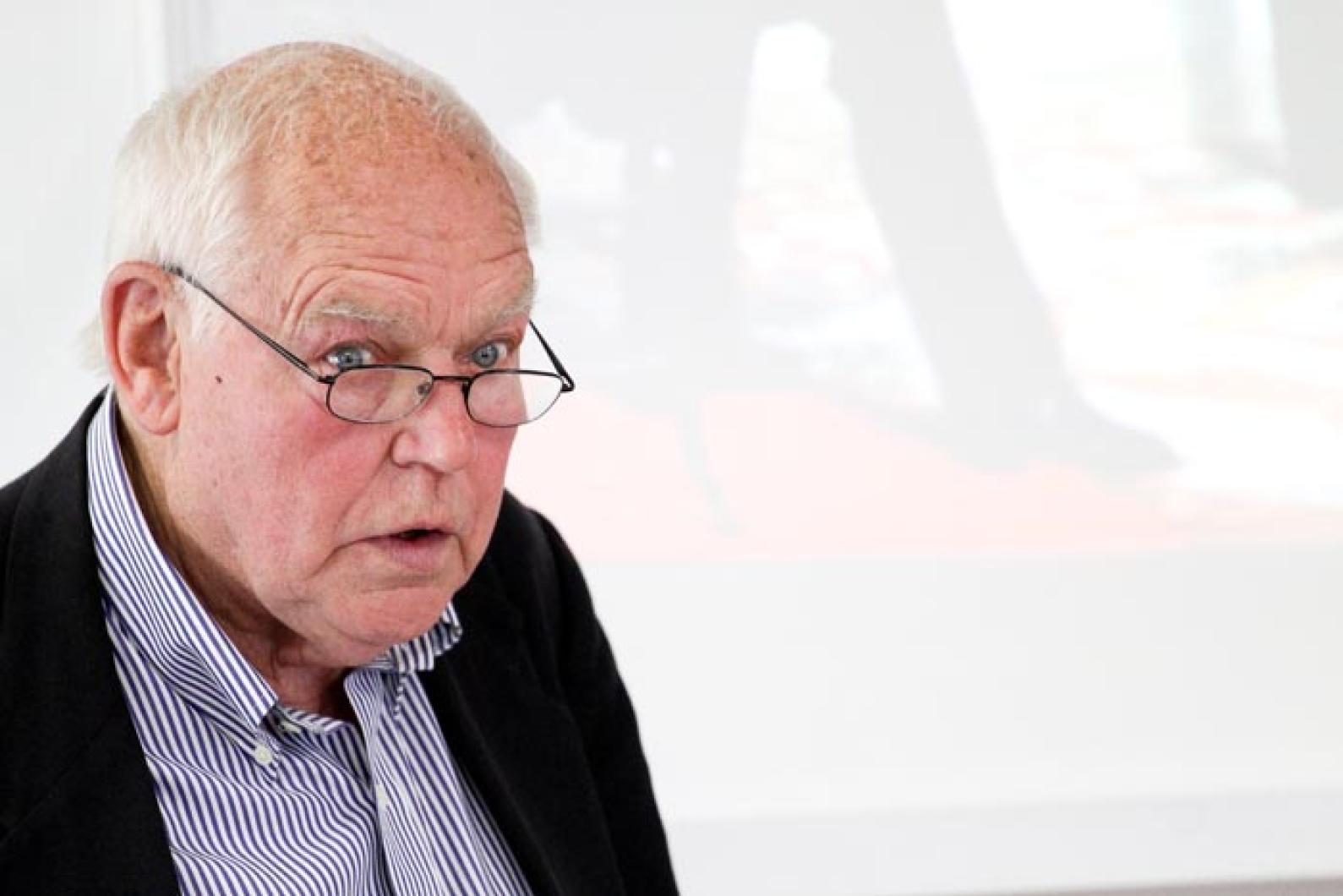Pulitzer prize-winning historian William McFeely set the mood for the rapt crowd at the library of the Martha’s Vineyard Museum on Tuesday. They had gathered to learn about the role that one Vineyard ship played at the close of the Civil War.
“We are in January 1865, the fourth year of the war that would finally end in April,” Mr. McFeely said in his talk that was part of an ongoing museum lecture series on the Civil War. “Grant was in command of all the Union armies and had set up his headquarters in Union Point, Virginia, south of the Confederate capital of Richmond.”
With Sherman storming through the Carolinas, and Atlanta and Savannah in ruins behind him, and Grant breaking through Petersburg, the last defense of Richmond, the Confederates were desperate to negotiate a peace. Three leaders of the Confederacy, Alexander H. Stevens, John A. Campbell and Robert M. T. Hunter, were granted passage through the front lines at Petersburg to meet with General Grant, and as they trudged through the battlefield a cry came up from the forsaken soldiers now four years into a war that would claim the lives of 620,000 of their countrymen.
“Peace! Peace!” they exclaimed.
Grant accepted the Confederate representatives cordially and eventually escorted them to Hampton Roads, Virginia where they found an audience with President Lincoln aboard the River Queen, a ferry that would become familiar to Islanders in its afterlife as a shuttle between Fall River and the Vineyard.
Once aboard, the southerners floated the peculiar idea of a joint Union-confederate strike on Mexico to depose Maximilian and install Jefferson Davis as emperor of Mexico in service of the Monroe DoctrineC
“Lincoln was having none of this,” said Mr. McFeely. “Any agreement with the commissioners would have in effect been a recognition of the Confederate nation — something he had no interest in doing. Instead he insisted full restoration of the union and acceptance of the 13th amendment ending slavery that was working its way through the Congress.”
Little record of the meeting survives, but onboard the River Queen was what Mr. McFeely called the “servants’ underground press.”
“There was a sixth man in the room,” he said. “A black sailor serving as orderly supplying the refreshments. Word undoubtedly went back to the community that Lincoln was sticking by his word on ending slavery.”
Later the River Queen would be immortalized by the painter George P.A. Healy in his famous work The Peacemakers that depicts the historic meeting in the parlor room of the ship with Sherman, Grant, Lincoln and Adm. David Dixon Porter. In two weeks the war would be over and the tableau provides a tantalizing peek into Union leadership at the close of the gruesome conflict.
“With reconstruction coming at the end of the war historians would love to know what was on Lincoln’s mind, but as I have said elsewhere the picture was a cartoon without a caption,” he said. “All we can be sure of is they were looking forward to military victory and an undefined peace.”
The civil war ended 146 years ago, but Mr. McFeely said men are still blinded by a sentimental ardor for battle.
“I don’t know that our two boat rides tell us much about what is useful about making peace,” he said. “We could hope that Lincoln, Grant, Stevens, Campbell and Hunter did cut through the civility of discourse and face some of the realities of death as they sought a way to end the war . . . We are presently engaged in a seemingly endless war and no one seems to find a way to end it. Perhaps we need more voices like those of the Petersburg soldiers to shout out, ‘Peace! Peace!’”







Comments
Comment policy »